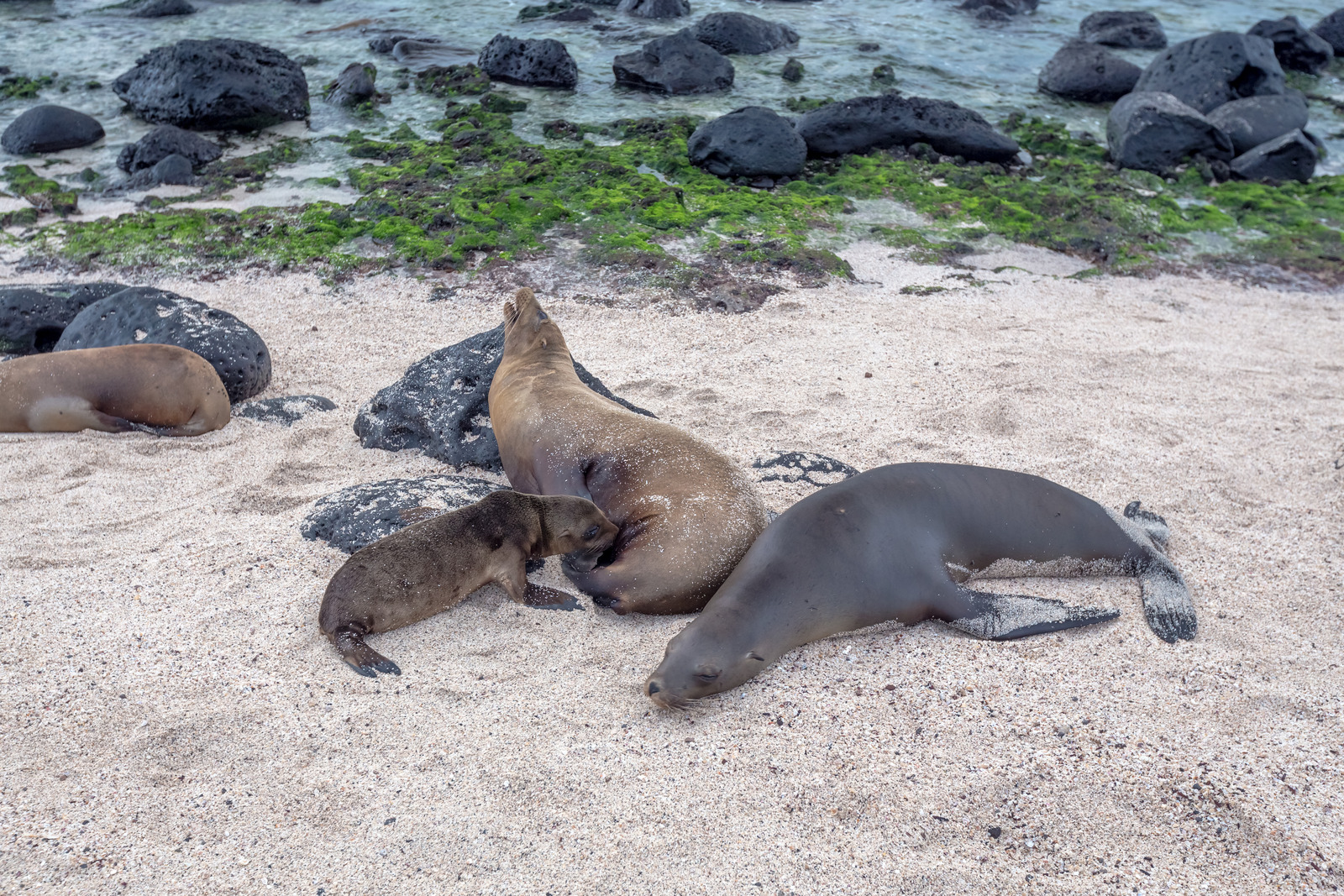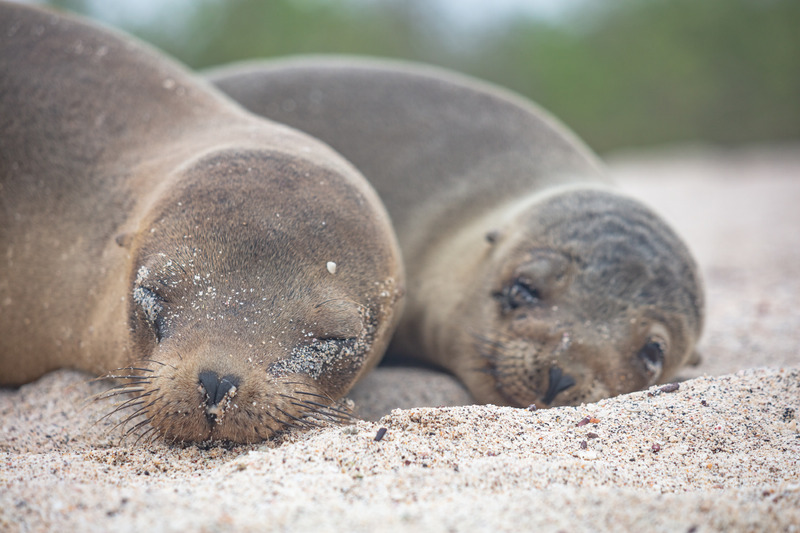Over the past 40 years, Galapagos’ endemic pinnipeds — sea lions or fur seals — has seen a 50% decline in their population. Their numbers have drastically declined due to climate change and pollution as well as invasive species. They are listed on the International Union for Conservation of Nature UCN’s Red List of Threatened Species because of these threats and their isolation.
Galapagos Conservancy will support research this year to assess the threat of climate change to Galapagos sea lions, fur seals, and other marine mammals. This is led by Dr. Diego Paez (Universidad San Francisco de Quito) who has been working for the past two decades on research projects related the Galapagos Islands’ marine fauna.
This project is co-ordinated by Dr. Jorge Carrion, Galapagos Conservancy Director of Conservation. It also involves USFQ researchers. This study aims to track changes in feeding habits of the Galapagos Sea Lions and Galapagos Fur Seals on a seasonal as well as interannual basis during normal and warm periods. It uses a variety of techniques to determine dietary plasticity, which is a diet’s ability to adapt to an environment. Also it will examine their relationship to climate change. Experts believe that climate change has led to an increase in the frequency and intensity of El Nino events, which raise ocean temperatures. The Galapagos Marine Reserve’s temperature rises, reducing its productivity and making pinnipeds’ food scarcer, putting their population at risk.
Dr. Carrion asserts that this research will provide baseline data to conserve Galapagos pinnipeds, and allow researchers to examine the long-term impacts of climate change on these species. Dr. Paez, for his part, affirms that the study “investigating this issue, we are tracing and trying to connect dietary composition, homerange, and trophic flexibility, with their feeding success, energy budgets, and food budgets.” This study will have an impact on the population dynamics, health, resource management, and other aspects of human health.
Experts believe that sea lions manage the prey populations to ensure balance in marine ecosystems. Paez said that pinnipeds were “bioindicators” of sea health. Only by studying their behavior, trends and patterns can we learn what is happening at the trophic levels below them (i.e. In the population of plankton and fish, as well as other marine species.
“This research contribution will expand our understanding of pinniped ecology. Carrion stressed that we hope to share information that will assist Galapagos Marine Reserve managers understand this species’ function in ecosystem sentinels.
Galapagos Conservancy would like to congratulate Dr. Diego Paez on his contributions to the preservation and enhancement of Galapagos’ ecosystems. His research on the link between climate change, Galapagos Sea Lions and the environment will undoubtedly help in the preservation of these species. We hope other young people will follow his example and assume the immense responsibility of caring for the Galapagos Islands, their natural heritage, and the surrounding areas.




